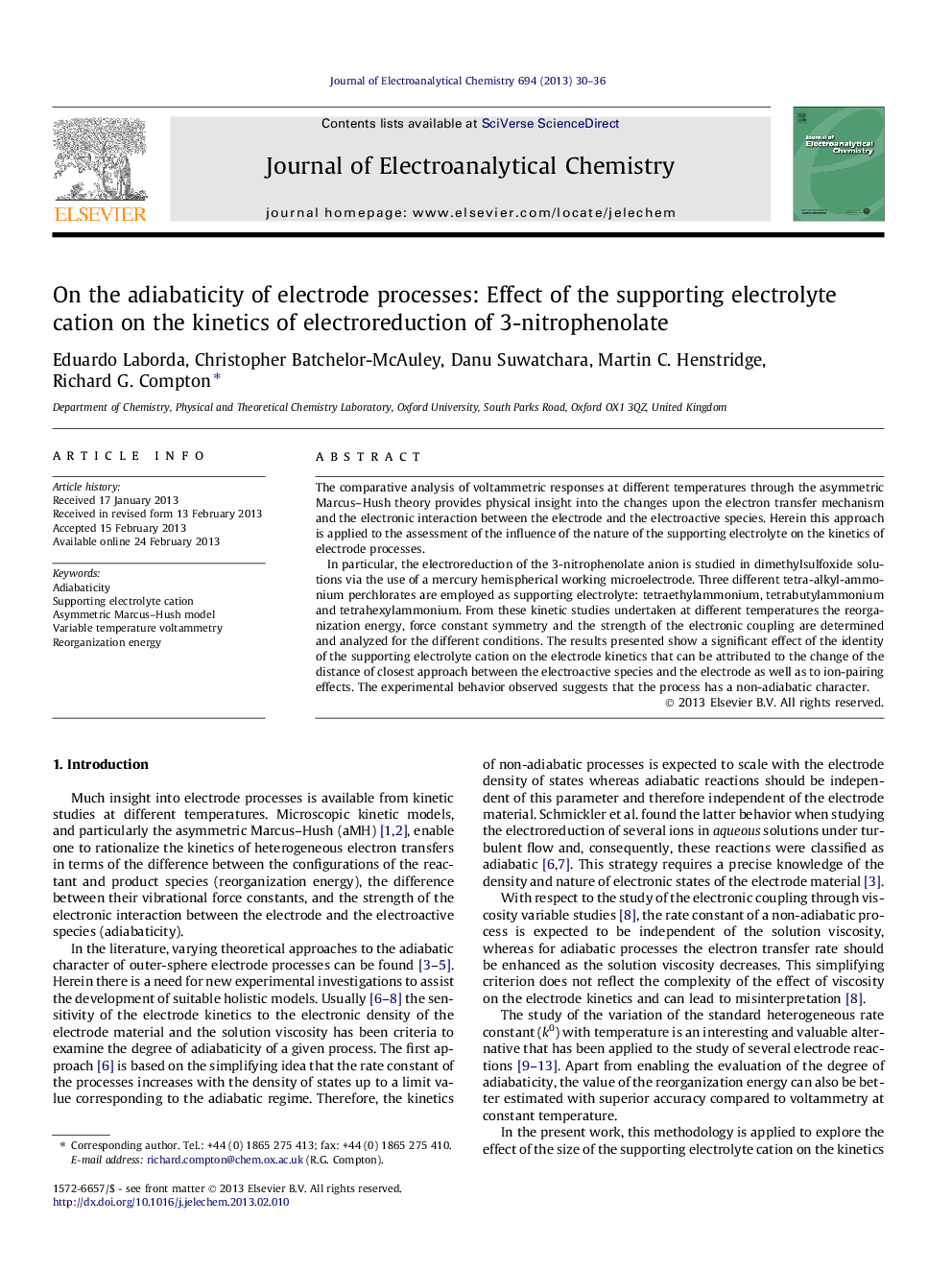| Article ID | Journal | Published Year | Pages | File Type |
|---|---|---|---|---|
| 219081 | Journal of Electroanalytical Chemistry | 2013 | 7 Pages |
The comparative analysis of voltammetric responses at different temperatures through the asymmetric Marcus–Hush theory provides physical insight into the changes upon the electron transfer mechanism and the electronic interaction between the electrode and the electroactive species. Herein this approach is applied to the assessment of the influence of the nature of the supporting electrolyte on the kinetics of electrode processes.In particular, the electroreduction of the 3-nitrophenolate anion is studied in dimethylsulfoxide solutions via the use of a mercury hemispherical working microelectrode. Three different tetra-alkyl-ammonium perchlorates are employed as supporting electrolyte: tetraethylammonium, tetrabutylammonium and tetrahexylammonium. From these kinetic studies undertaken at different temperatures the reorganization energy, force constant symmetry and the strength of the electronic coupling are determined and analyzed for the different conditions. The results presented show a significant effect of the identity of the supporting electrolyte cation on the electrode kinetics that can be attributed to the change of the distance of closest approach between the electroactive species and the electrode as well as to ion-pairing effects. The experimental behavior observed suggests that the process has a non-adiabatic character.
► The effect of the supporting electrolyte cation on electrode kinetics is investigated. ► 3-Nitrophenolate reduction in DMSO is studied on mercury hemispherical microelectrode. ► Kinetic study is carried out with variable temperature cyclic voltammetry. ► The kinetics is characterized within the asymmetric Marcus–Hush model. ► The cation size affects the reorganization energy and adiabaticity of the reaction.
